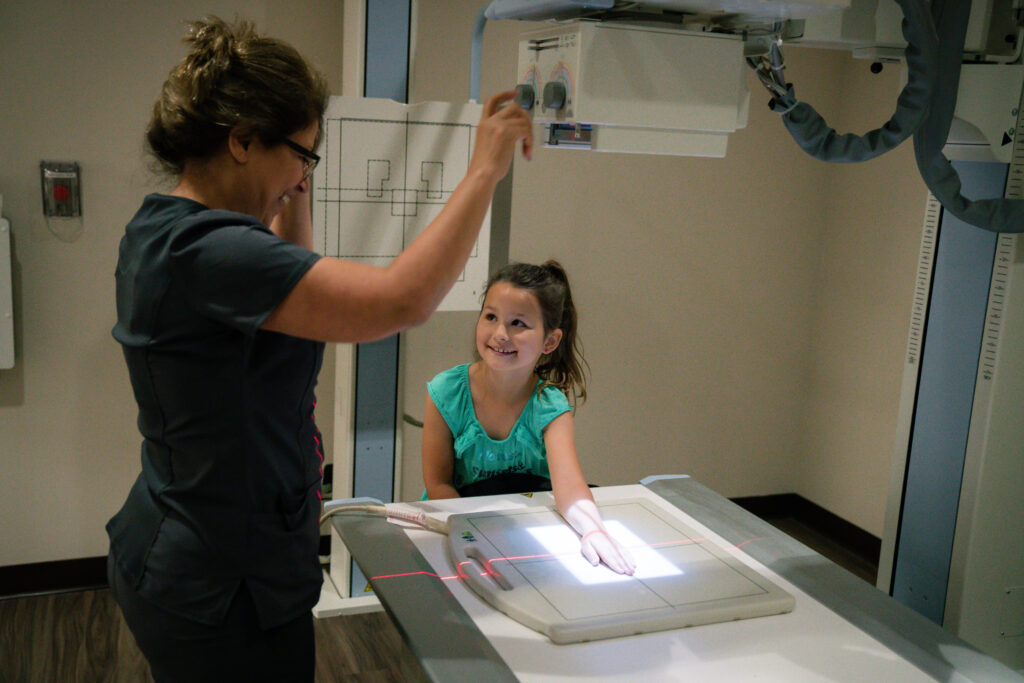Introduction: Accidents can happen at any moment, and when a broken bone is involved, knowing where to turn for immediate care is crucial for a smooth recovery. This article, presented by iCare ER & Urgent Care, seeks to explore the vital importance of discerning various types of fractures and making informed decisions about whether to choose urgent care or er for Broken bones or fractures.
Understanding the Severity of Fractures
Fractures vary in severity, and recognizing the extent of the break is key in deciding whether to opt for urgent care or head straight to the emergency room. While an urgent care center is adept at handling minor fractures like stress fractures or breaks in extremities, more severe fractures, such as open or complete fractures, necessitate the resources of an emergency room.

Types of broken bones
A broken bone, also referred to as a fracture, is typically a result of direct force or trauma. In some cases, diseases like osteoporosis may cause the bones to be brittle and easily broken. Fractures can occur almost anywhere on the body. Some are very mild and can be repaired without any medical intervention. Other breaks are very serious, and may even be life-threatening if they cause internal bleeding or puncture a vital internal organ.
Regardless of the cause of the break, bone fractures fall into two categories:
-
Compound or open fracture: The broken bone protrudes from or through the skin, exposing underlying tissues and bones.
-
Simple or closed fracture: This fracture does not break through the skin and can sometimes be challenging to diagnose without digital imaging, such as an X-ray.
Signs and symptoms of a broken bone
- Pain: Intense, sharp pain localized at the injury site. Pain may worsen with movement or when pressure is applied.
- Swelling: Rapid and noticeable swelling, often prominent around the fracture site. Swelling can develop quickly after the injury.
- Bruising: Bruising may extend along the injured limb, appearing in proximity to the fracture. The extent of bruising can vary based on the severity of the fracture.
- Deformity: Visible deformity or misalignment of the bone. Severe fractures may result in a noticeable change in the shape of the affected area.
- Limited Range of Motion: Restricted movement or inability to use the affected limb properly. Range of motion is significantly limited due to pain and instability.
- Crepitus: Grating or grinding sensation or sound when the broken ends of the bone rub against each other. This may be present, especially in more severe fractures.
Treatment of Minor Injuries and Fractures in Urgent Care
Urgent care facilities are well-suited for addressing sprains and simple or closed fractures, particularly when equipped with X-ray capabilities. The use of digital imaging aids in accurate diagnoses, and immediate care interventions, such as splinting, are often initiated to effectively manage minor injuries. It’s essential to note that not all urgent care facilities have X-ray capabilities, emphasizing the unique advantage of iCare ER & Urgent Care in providing comprehensive care, including necessary diagnostics for orthopedic injuries.
Treatment of Fractures or Broken Bones in the ER
In cases of more severe fractures, such as open or complete fractures, seeking treatment in the emergency room (ER) is crucial. ERs offer comprehensive diagnostic capabilities, including X-rays or CT scans as needed. Furthermore, the ER has additional resources for setting broken bones and providing casting or splinting services. When faced with a significant fracture, the emergency room is equipped to handle the complexities of treatment and ensure optimal care.
Signs Prompting ER Treatment for Broken Bones:
Recognizing the signs and symptoms of a broken bone is critical for making well-informed decisions about where to seek care. Specific symptoms necessitate a visit to the emergency room, including:
- Bone protruding from the skin
- Additional injuries accompanying the fracture
- Numbness at the trauma site
- Excessive bleeding
- Restricted movement near a joint
- Feeling faint or losing consciousness
Being attentive to these indicators allows individuals to make informed choices regarding the appropriate level of care, ensuring timely and effective treatment for more severe fractures.

Choosing iCare ER & Urgent Care:
iCare ER & Urgent Care, with its unique “hybrid” model, seamlessly integrates emergency room and urgent care services in one facility across Frisco, Fort Worth, and Forney, TX. Staffed by Board-Certified Emergency Room Physicians and Registered Nurses, specializing in promptly addressing a range of injuries, including broken bones.
Treatment for Broken Bones at iCare ER & Urgent Care:
Upon arrival at either Frisco or Fort Worth locations, a board-certified emergency room physician ensures a swift evaluation and personalized treatment plan. Equipped with state-of-the-art technology, iCare ER & Urgent Care conducts necessary diagnostic procedures, such as X-rays, to assess and treat broken bones.
Treatment options, including splints, casts, or slings, are tailored based on the fracture’s type and severity. iCare ER & Urgent Care also offers orthopedic solutions like boots, crutches, or canes, with pain management and prescription medications addressed as needed. For more complex cases requiring surgery or a hospital stay, iCare ER & Urgent Care’s professional staff facilitates seamless transfers or referrals to specialists, ensuring comprehensive and timely care for patients with broken bones.
Rest assured that iCare ER & Urgent Care is your trusted partner, delivering the right care at the right time for a smooth and effective recovery for care and treatment of fractures.






